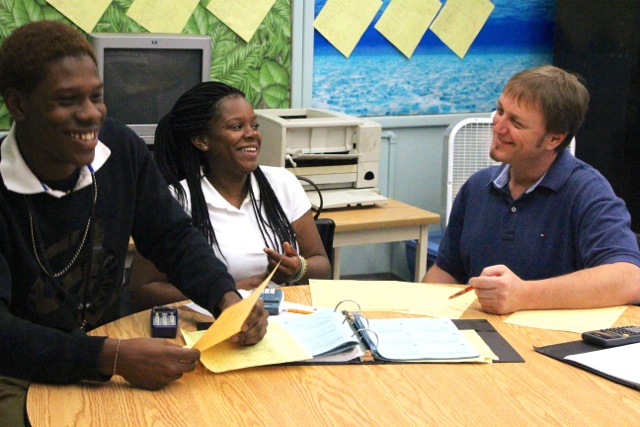Outage Notification
On Thursday, October 30, 2025 at 5am ET we will be updating the NJCTL Moodle site. The site will be unavailable for approximately 4 hours.

In 2010, Nicholas Ferriero was an environmental science teacher at Malcolm X Shabazz High School in Newark. He was non-tenured and was in line to lose his job that spring amid a big shake-up in the district.
“All I could think was ‘How did this happen?’ I received a pink slip, even though I had received excellent reports and had a great rapport with my students and faculty,” Ferriero said.
It was then that he remembered when the New Jersey Center for Teaching and Learning® (CTL®) and its director, Dr. Robert Goodman to talk about the organization’s Progressive Science Initiative® (PSI®). Ferriero attended a brief seminar where Goodman discussed the program and recalls being intrigued, but skeptical.
“As an educator, there are a lot of programs that come and go and I, honestly, wasn’t sure if this was just another quick fix,” Ferriero said.
Now, nearly four years later, Ferriero was able to redeem his employment at Shabazz, is one of four certified PSI teachers there, and teaches courses at Bergen County Technical High School in the summer to help other teachers become certified in physics.
“You can say I’m no long skeptical,” he laughed.
PSI was compelling to Ferriero because of his science background, but also because of PSI’s student-friendly approach.
“There’s a lot of scaffolding with PSI. Concepts build upon one another and there’s an exceptional amount of material that is like practice material—you’ll solve one problem to prepare you to solve another problem and it just builds. You change little variables here and there but you’re also enforcing the content. It’s a really well-structure, content reinforcing package.” Ferriero said.
The PSI model is effective, he said, because of its structure and consistency. The material, presented in the form of presentation slides, allows for formative assessment questions built in using the interactive SMART software. This approach engages students and allows them to vocally engage, but also answer questions anonymously if they’re unsure.
“Traditionally, if a student were unsure about an answer to a problem, she or he would not raise her or his hand. Now, everyone can answer and not feel embarrassed because they’re unsure,” Ferriero said.
Teachers are also able to tailor their instruction model based on the level of responses. “Is the whole class getting it? Is the majority of class getting it? Is there a consistency of students not getting it?
“Not only do you not have to wait for a summative assessment to determine whether a student is getting it or not, but you can look at your data at the end of the day and see who is getting things consistently right or wrong,” Ferriero said. “PSI offers engagement, social constructivism so students are working in good groups, it offers consistency and a multitude of questions for classwork and homework.”
Now fully on board with CTL and PSI, Ferriero has not looked back, realizing that while physics was not on his radar when he first began teaching, innovation in education was.
Tags: News